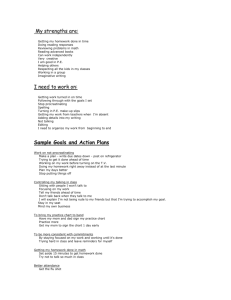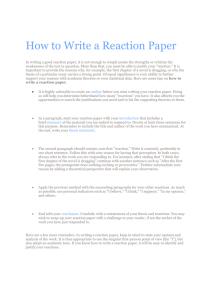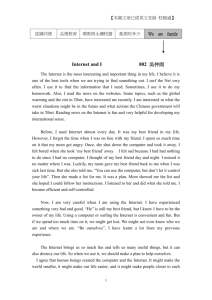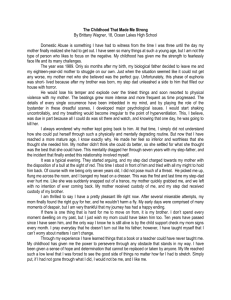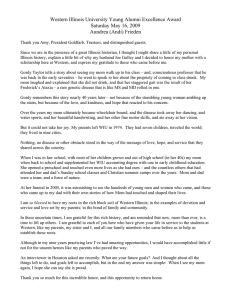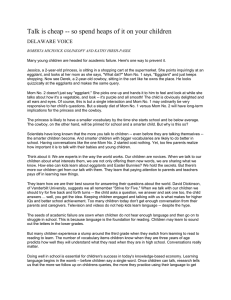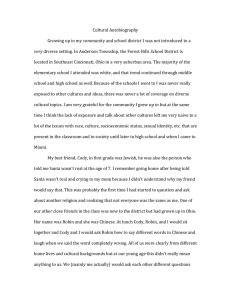Family Beliefs, Rituals and Rules
advertisement
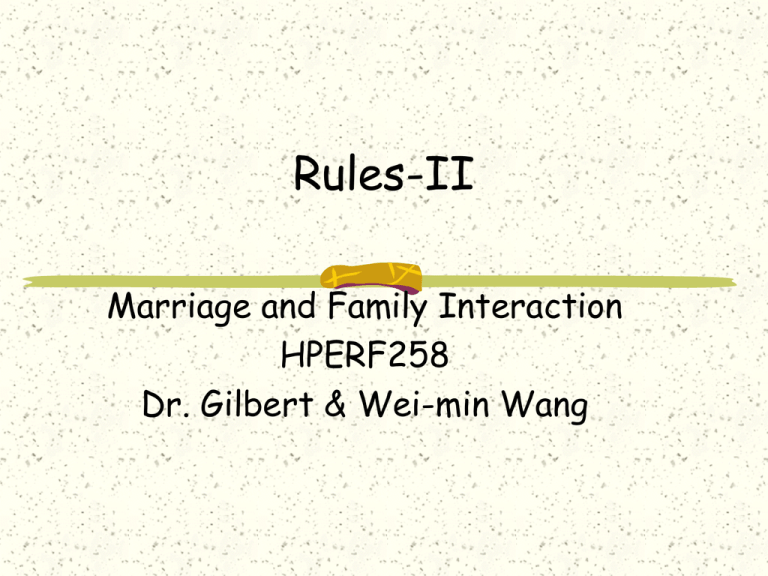
Rules-II Marriage and Family Interaction HPERF258 Dr. Gilbert & Wei-min Wang Explicit (also called Overt or Known) Visible, stated clearly 10% of all family rules Have been discovered and/or talked about More formalized The forms of rules we tend to list when first asked to identify rules Usually stand unless specifically changed Implicit (also called Covert or Unknown) Tied to more abstract thinking 90% of all family rules Hidden from view Being hidden makes them powerful Accepted as “how things are” – basic structure of the family belief system Also makes them more open to misinterpretation because it is often assumed that family members understand and go by rules Examples of Rules Hurting each other Children using alcohol and other drugs Adults using alcohol and other drugs Telling lies Sex Dating Breaking promises Smoking cigarettes Privacy Respect Beliefs and opinions Rules & Expectations What are some important stated rules in your family? What are some important but unstated rules in your family? What are some key expectations your family has on you? If you don’t follow these rules or meet the expectations, what might happen? Other Examples of Rules Emotion expression Anger Affection Family Secret Rule sequencing A connected series of rules Example: Dad has a bad day at the office Dad comes home and criticizes Mom Mom takes the anger out on a child The child kicks the dog Cycles Vicious cycles Starting point of cycle may not be apparent Feedback loops make the cycles hard to change and seem to “have a life of their own” Although there may be variations, the cycles will be repeated over and over Example Mom complains the he shouldn’t waste his time on visiting her Son goes home to visit mom Son is angry and goes back To his dorm Mom calls complaining that he doesn’t visit her more often Punctuating rule sequences In order to change behavior in the family, you have to “punctuate the problem” and artificially stop the behavior sequence Orders of Change First order change – changing behavior Largely focuses on explicit rules Second order change – changing the beliefs, values, etc. that underlie the behaviors First order change is largely ineffective Managing Rules Look for underlying, deeper rules (changing superficial rules will result only in first order change) Think in terms of changing the underlying beliefs, values, etc. Look at rule sequences instead of individual rules Small group discussion Reading #45 addresses “Managing a Blended Family.” In your small group, discuss how blending family rules complicates this process. How might this be made less difficult? Final Thoughts on Lecture Material In your small group, develop a list of at least five points about the role of rules in families.


